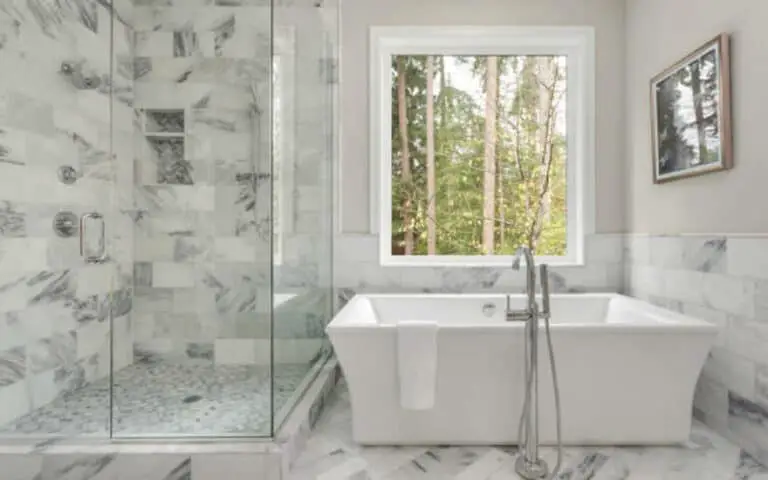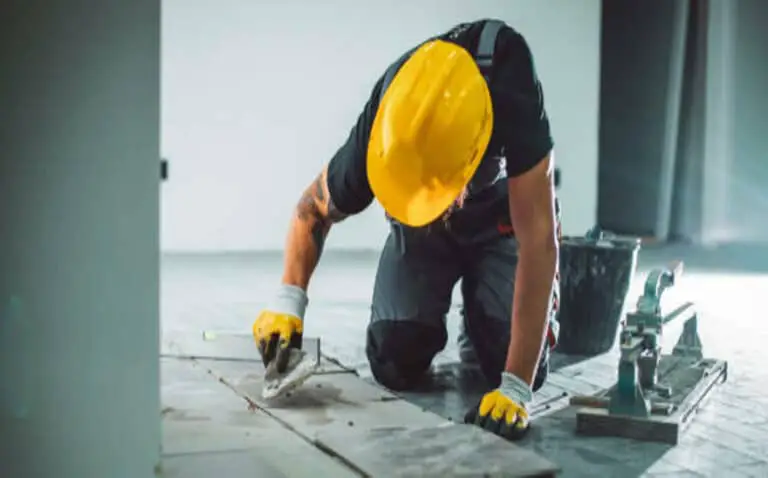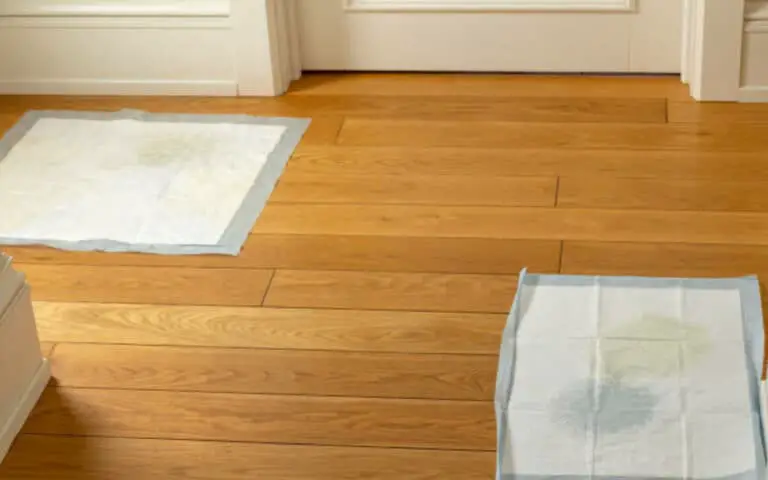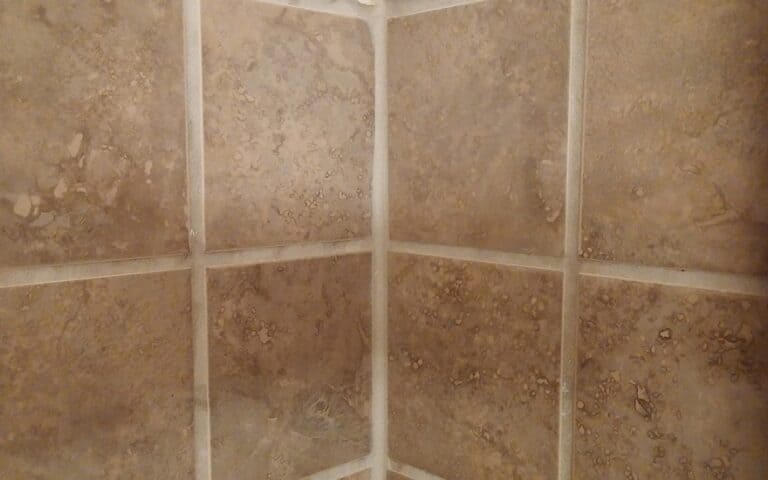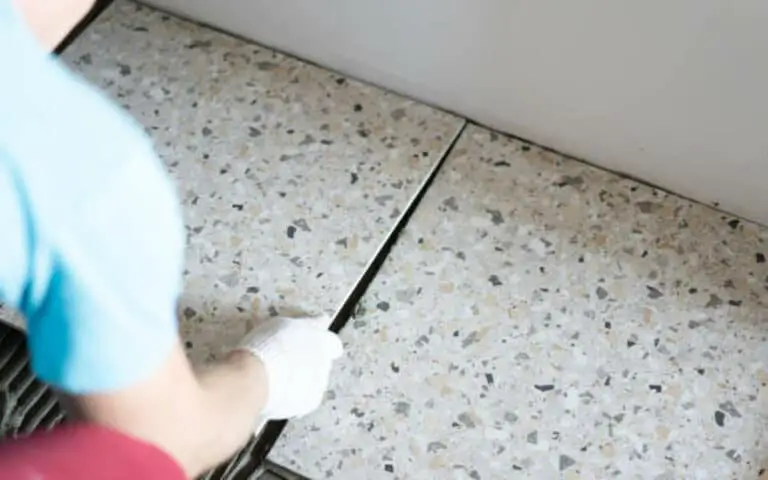If you’ve ever had the misfortune of a wet laminate floor, you know how frustrating it can be. But what happens when water comes in contact with your laminate floors? In this blog post, I’ll discuss the effects of water on laminate flooring and how to deal with them.
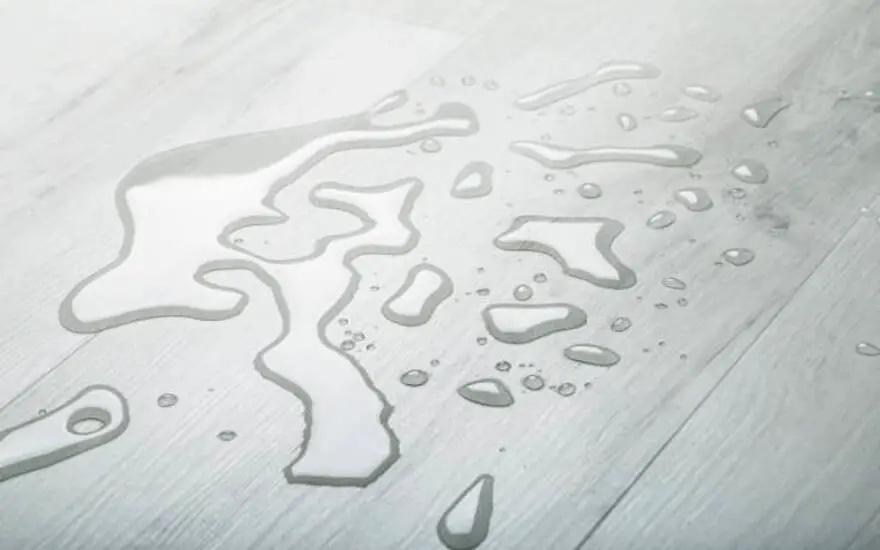
What happens when laminate floors get wet?
Water damage can occur due to standing water, excessive moisture, or discoloration and warping of boards. Laminate flooring is susceptible to water damage because it is not a waterproof material, and the wear layer can only protect so much against water damage.
Mold can grow on your floors within 24 hours if left untreated, making it important to act quickly if water gets onto your laminate flooring. You may be able to dry out your laminate flooring in a few days, depending on how much water has gotten on the floor and the materials used in the laminates.
If your laminate flooring is too badly damaged by water, you may need to replace it. To prevent water damage to laminate flooring, it is important to mop up any spills quickly and seal any open seams or damaged areas with waterproof sealant.
If you experience water damage to your laminate flooring, you may be able to repair it yourself by removing the wet boards and replacing them with new ones.
How Damage Occurs?
When it comes to laminate flooring, water can be a real enemy. If water is allowed to sit on the floor’s surface for too long, it can seep into the layers of the boards and cause them to swell and warp. This is why cleaning up any standing water as soon as possible is important.
Excessive moisture can also cause discoloration and warping of the boards, which can be difficult to repair. To understand how damage occurs with laminate flooring, it’s important to understand what materials are used in its construction and how they react differently when exposed to wetness.
1. Water damage from standing water
Water damage from standing water can be a serious problem for laminate flooring. If your laminate flooring is exposed to water left to stand on the surface, it can cause warping and discoloration of the boards.
The moisture can accumulate beneath the flooring, causing swelling and mold growth. It’s important to clean up any standing water as soon as possible to prevent further damage.
If you notice any water damage on your laminate flooring, contact a professional to assess the damage’s extent and determine the available repair options.
2. Damage from excessive moisture
When it comes to laminate flooring and water damage, excessive moisture is the biggest culprit. This type of damage occurs when the floor is exposed to too much moisture, and it can cause discoloration, warping of boards, swelling, and even mold growth.
It’s important to clean up any standing water immediately and dry the area completely. Using a dehumidifier can help speed up the drying process. If you’re dealing with a large amount of water or the boards have been saturated for an extended period, then it may be necessary to replace the damaged boards.
Taking proactive steps to prevent moisture from accumulating around your laminate floors can help keep them looking new for years to come.
3. Discoloration and warping of boards
When laminate flooring gets wet, it can cause discoloration and warping of the planks. This happens because wood fibers in real wood run lengthwise and are weak when exposed to water. As the moisture soaks into the boards, they can become discolored and buckle and swell.
The discoloration is usually the first sign that water has reached your laminate flooring, and if not addressed quickly, the warping will follow.
If you notice any discoloration or buckling of your laminate flooring, you should take steps to dry it out as soon as possible to prevent further damage.
Why is laminate flooring susceptible to water damage?
I’m sure many of us have wondered why laminate flooring is so susceptible to water damage. After all, it is meant to be a durable and long-lasting flooring option. The answer lies in the construction of laminate flooring and the materials used in its production.
Laminate flooring consists of multiple layers, with a wear layer at the top that absorbs water and protects against damage. However, if water seeps past this layer, the core layer can become damaged, leading to warping and discoloration.
Additionally, the materials used in laminate flooring can react differently to wetness, with some taking longer to dry than others. As such, it’s important to clean up any spills quickly and take preventive measures such as using mats near wet areas like sinks or showers.
How soon does mold grow?
As soon as laminate flooring comes in contact with water, mold can grow in as little as 24 hours.
Given the right, moist environment, it would easily thrive. Act quickly if you notice any signs of water damage on your laminate floors because the longer it is left untreated, the worse the damage.
Mold can cause discoloration and warping of boards and, if left unchecked, can lead to more costly repairs in the future. The drying time of water damage depends on the amount of water present, and different materials used for laminates can react differently to wetness.
If you suspect that your laminate flooring has been exposed to water for more than three hours, it’s best to replace it. Preventive measures like ensuring good ventilation and regularly cleaning up spills will help protect your laminate floor from water damage.
How long does it take to dry?
Drying time is of the utmost importance regarding laminating floors and water damage. If you have experienced a spill or flooding in your home, you may wonder how long it will take for your laminate flooring to dry.
The answer depends on the amount of water, the materials used in the laminates, and whether or not you are using dehumidifiers and high-volume fans. In tests, standing water takes a couple of hours to do enough damage to laminate flooring.
However, if you use dehumidifiers and high-volume fans to dry out the area, the flooring can take anywhere from 12 to 36 hours to dry completely. It’s important to act fast when your laminate floors get wet to minimize any potential damage.
1. The drying time depends on the amount of water
The amount of water present affects the drying time for laminate flooring. If the laminate has been flooded, it could take 12 to 36 hours to dry out. However, if there is excessive moisture present, it could take much longer for the laminate to dry out.
Different materials used also affect the drying time, so it’s important to keep this in mind when choosing laminate flooring.
Additionally, standing water and mold can occur if the laminate is not dried quickly enough, so it’s important to act quickly and use dehumidifiers and high-volume fans to dry it as quickly as possible.
2. Different materials used for laminates react differently to wetness
When it comes to wetness, different types of laminate flooring react differently. For example, engineered hardwood can be more resilient in wet conditions than solid hardwood, and vinyl laminate is often highly water-resistant.
It’s important to be aware of the materials used in the make-up of your floor before any water damage occurs. Being mindful of this can help you make an informed decision on how to deal with water issues.
Suppose you have questions about protecting your laminate flooring from water damage. In that case, it’s best to consult a professional who can give you the best advice for your particular situation.
When should I replace my laminate flooring after water damage?
If you have experienced water damage to your laminate flooring, it is important to assess the situation and determine if replacement is necessary.
While laminates are generally more resistant to water than other types of flooring, prolonged exposure can cause warping, discoloration, and even mold growth.
Suppose the water damage is from a sewage backup or flooding. In that case, it is important to replace the laminate flooring quickly to avoid any health risks associated with mold and bacteria.
If the damage is from spills or other minor water exposure, you may be able to salvage the flooring by cleaning up the excess water and drying it thoroughly. However, if there is any doubt about the integrity of the flooring after water damage, it’s best to replace it as soon as possible.
How do I fix water under laminate flooring?
If you have water under your laminate flooring, it’s important to act quickly to prevent further damage. First, remove any standing water.
If there’s less than an inch of water, you can use a dry cloth or towel to absorb the liquid. If there’s more than an inch of water, you may need to use a wet/dry vacuum or a mop and bucket. After that, use fans or an open window to help dry the area.
Ensure that you remove any wet molding, as this can cause further damage if left unchecked. Finally, consider replacing the laminate in the affected area to prevent further water damage.
How Can You Prevent Water Damage to Laminate Flooring?
As a homeowner with laminate flooring, it’s important to take measures to prevent water damage. To do this, you should always clean up any spills or messes as quickly as possible and avoid leaving standing water or excessive moisture on the floor.
Additionally, it’s important to avoid installing laminate floors in areas susceptible to high moisture levels, such as bathrooms, basements, kitchens, or laundry rooms. You should also check the seals around windows and doors for leaks and seal them if necessary.
Finally, if you notice any discoloration or warping of your boards, it may be a sign of water damage and should be addressed immediately. These steps can help protect your laminate floor from water damage and ensure its longevity.
How Do You Repair Water Damage to Laminate Flooring?
When repairing water damage to laminate flooring, the first step is to inspect the floor and locate all the affected areas.
Once you have identified the affected boards, you will need to remove them from the floor and replace them with new planks.
This is a relatively easy task, but it is important to make sure you purchase planks that match the existing flooring in color and pattern for a seamless look. Additionally, it is important to ensure that all new planks are properly sealed and installed to prevent future water damage.
Final Verdict
In conclusion, laminate flooring is susceptible to water damage. It can cause delamination, discoloration, warping of boards, and mold growth.
To minimize the risk of water damage, it’s important to take preventive measures such as mopping up spills immediately, ensuring proper ventilation, and avoiding getting the sides, open seams, damaged areas, and bottoms wet.
If water does get under the laminate planks, it’s important to act quickly and use a wet/dry vacuum to suck up the water. It may be necessary to replace the laminate flooring with severe water damage.

